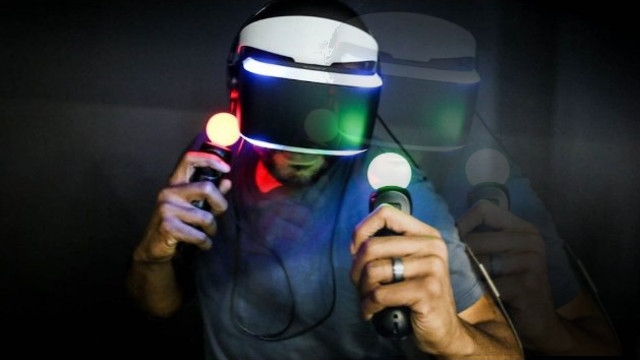PlayStation Vice President of Research & Development Dominic Mallinson says that next-gen VR will “double resolution” as compared to the current offerings on the market. This is just one of many predictions from someone with a keen eye on the virtual reality space and the future is certainly looking very bright.
Speaking to VentureBeat, Mallinson laid out several key areas that he believes next-gen VR will improve over current tech. “The first is resolution,” Mallinson said. “This is more pixels per degree. It’s about the sharpness and the clarity of the display. And you have to be able to match what people expect to see today with high definition. I would expect the resolution to roughly double in the next set of VR products.”
That’s not the only improvement that Dominic Mallinson predicts for upcoming virtual reality products. He states that the human field of view is 180 degrees, but most VR headsets are only capable of extending out to around 100 degrees. The next generation of tech should be hitting 120 degrees — a 20% improvement.
Graphics, too, will see an improvement. “The human eye sees an enormous range of light from bright sunlight to deep shadow,” he continued. “Today’s VR panels only capture a tiny fraction of that. So in order to increase the sense of presence, I do expect to see HDR adopted in the near future.”
Another area that next-gen VR will improve comes down to a more practical matter: cables. The future is certainly wireless — Google announced wireless VR projects two years ago, and the Oculus Quest and the VIVE Wireless Adapter show that tech developers are already on the ball. While he doesn’t explicitly say as such, I think it’s fair to say that PlayStation will do their best to make the next iteration of the PSVR a wireless device.
The last bit of tech Mallinson highlighted for next-gen VR is gaze tracking. You may have seen this technology used in a YouTube video or two done for fun (perhaps most notably by PewDiePie). In short, a camera watches where your eyes are looking on a screen and tracks that input. This technology has been used for years in research for everything from advertising to design, but its gaming applications are endless.
Gaze tracking can most obviously be used for more efficient graphical operations. Your peripheral vision isn’t as sharp as your central vision (that is, where you’re actually looking) — a fast-responding gaze tracking system could tone down the graphics in your peripheral vision and only render the really pretty stuff where your eyes are actually pointed. It can, of course, also be used for gameplay. Imagine a shooter where you aim at a target simply by looking at it!
Several big companies are hard at work on next-gen VR. While the naysayers thought that virtual reality would have been long dead by now, it’s getting clearer every day that the tech is here to stay. It will certainly be exciting to see how it improves in the coming years — and what game developers can do with it.











